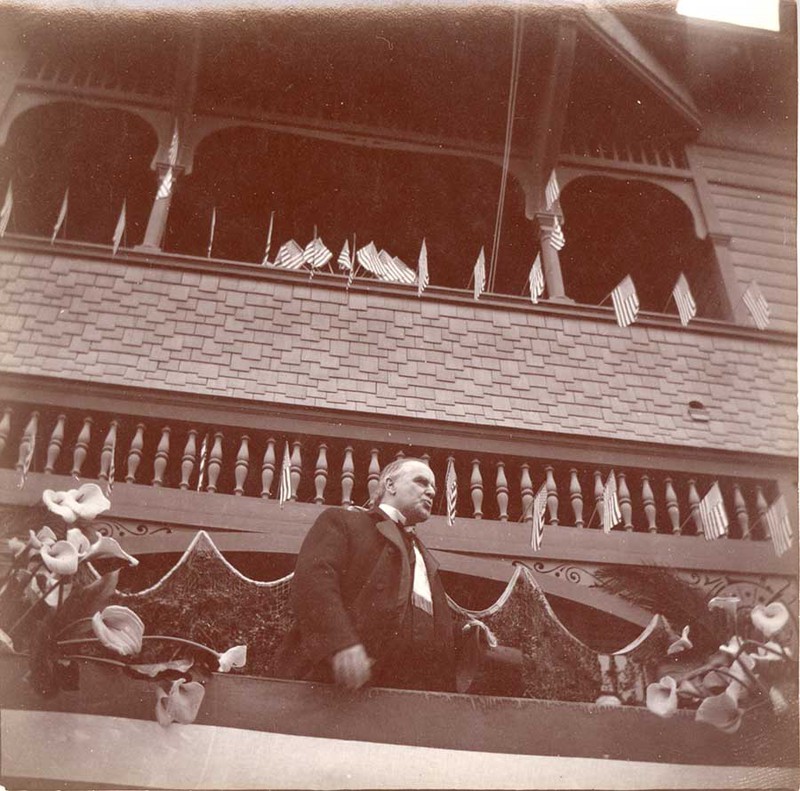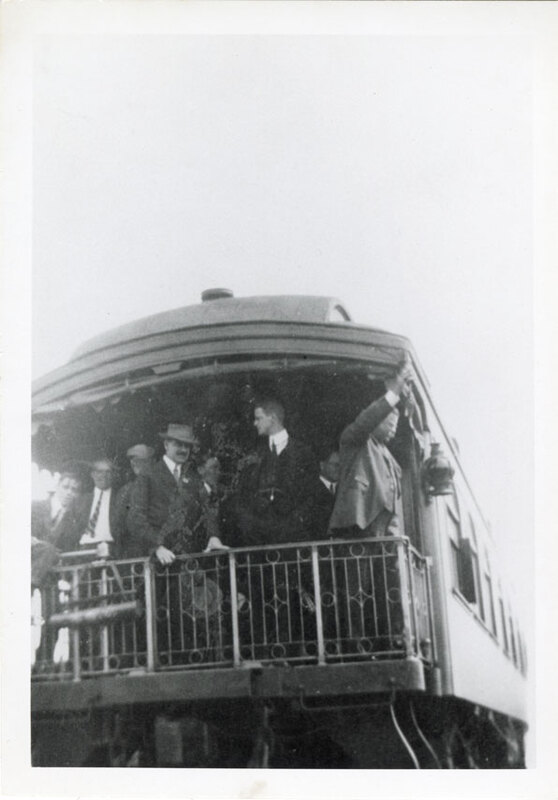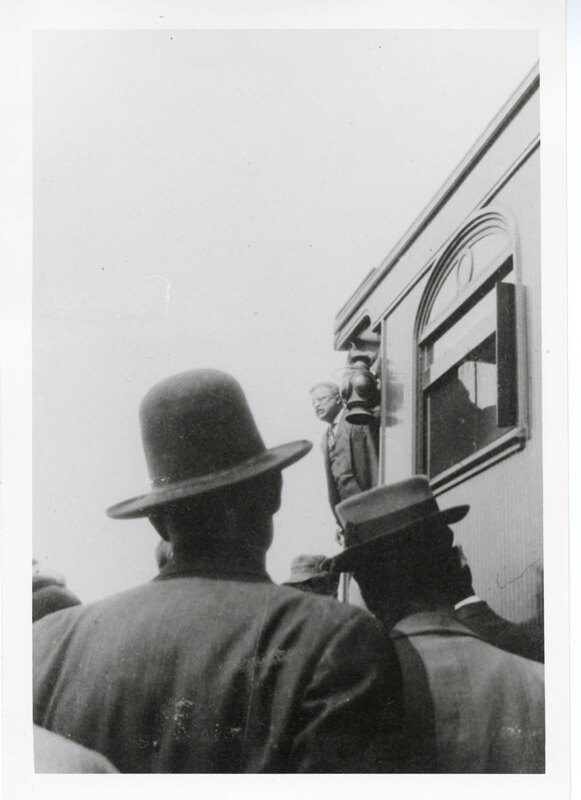By Herbert F. Ricard
We present the first in our new series Journal Flashback! This series will focus on previously published articles, snippets and historical gold nuggets from the MVC Quarterlies. The first in our series, and just in time for President’s Day, is about the history of presidential visits to the county. It was taken from Volume 26, Issue 1 (1981-82). Enjoy!
The visits of Presidents Nixon and Kennedy to Ventura County in the 1960s were in keeping with an old practice that goes back as far as George Washington. The Father of His Country toured through the nation, as it then existed, to observe in person the condition of the country and to learn at firsthand how the people felt regarding various matters. Other presidents, in their tours, have visited Ventura County. 1
The earliest known such visit was on April 24, 1891 when President Benjamin Harrison came in a four-car special train. He reached Santa Paula about 2:30 p.m., where a large and enthusiastic crowd appeared at the depot. Samples of the county’s beans were presented and also a miniature oil rig executed in various colored roses. After a few words from the rear platform, the party proceeded on to Ventura. President Harrison arrived at 3:20 p.m. to a crowd of over three thousand who had come to see a real, live president. This immense turnout was larger than had ever been gathered in the history of Ventura.
At that time the city’s population was only 2,320 and the county’s was 10,071. The stop here was very brief, planned for 10 minutes, during which the president said a few words from the rear platform.
William McKinley, the second president to reach Ventura, came on May 10, 1901. His eight-car special train stopped for 10 minutes at Santa Paula. The president spoke from the rear platform to a crowd of three thousand, many from the eastern part of the county. The depot was decorated and an archway was covered with flowers and the word WELCOME.

Ventura was allotted one hour for a program which consisted of a tour of the town and, of course, a talk by the president. The residences and businesses along the route were finely decorated, and the depot was transformed for the occasion from its dingy appearance to the most elaborately decorated building in Ventura. The masterpiece was a floral arch on Main between Fir and Ash Streets that was 25 feet high and 18 feet across between the pillars. It was covered with pepper leaves and more than 10 thousand calla lilies.
Seventeen carriages were in the procession to carry the honored guests and members of the reception committee through the town. They travelled from the depot along Main Street to San Buenaventura Mission, which the president entered and was shown through by the Rev. Patrick J. Grogan, along Poli Street for a view of the ocean, then down to Plaza School where he spoke to the throng, then back to the depot. The Weekly Free Press had a supplement in its next issue showing about 10 or 12 views of this occasion.
Theodore Roosevelt, the next presidential visitor, came on May 9, 1903, which was two years almost to the day, after McKinley. The special train stopped first at Oxnard for 10 minutes while the president made a rear platform appearance and said a few words to the crowd. When the train arrived at Ventura, there was a brief delay before Roosevelt appeared because he was still eating breakfast.
A one-hour program was planned that included a tour of the town. The presidential party and the reception committee occupied 11 carriages that went from the depot to Santa Clara Street, east to Ash, on Main to the mission, on Poli to Fir to Plaza School, and on Santa Clara and Kalorama Streets to the depot.

While visiting San Buenaventura Mission, the president expressed a desire to go up in the bell tower; so he went up and rang the old wooden bells. At the Plaza School he spoke to an audience of five thousand for 16 minutes although his advisors warned him three times that he was running behind schedule. It was planned and approved that the Pacific Squadron of our Navy would be at Ventura to participate in the welcome to the president, but at the last minute a problem of logistics made it impossible for the warships to appear.
The next three presidential visits are not authenticated. It has been stated that Woodrow Wilson once waved to the crowd from the back of a train, and that Franklin Delano Roosevelt went through under wartime secrecy conditions. Harry Truman is supposed to have spoken at Santa Barbara from the back of a train; if so, that train must have passed through Ventura. President John F. Kennedy came on June 7, 1963. He arrived in a Marine Corps helicopter at Point Mugu. The gates were opened for this occasion and thousands came to greet their president. He spoke briefly through a microphone that was too low for him and shook hands with those he could. After 22 minutes Kennedy left in the presidential jet. The Star-Free Press “Magazine” on the following day had a souvenir with pages of pictures that relate to the visit.
President Richard M. Nixon landed at Point Mugu on March 21, 1969 for a helicopter inspection of the flood damage and of the offshore oil leak. He gave a greeting to the marines who were present, then took off after a stop of 17 minutes. The public was not admitted to Point Mugu for this occasion because of the brevity of the visit.
Two of the three presidents who came to our county were assassinated a short time later: McKinley after four months and Kennedy after five months. In this connection, the guarding of these presidents was commented on in the newspapers at the time. The accounts of McKinley’s visit seemed to stress the careful guarding being given to him. Of Kennedy’s, one account said, “Secret service agents formed a human chain around the president as he walked into the throng shaking hands with anyone who could get to him.”
Footnotes
- On the 14th of April, President Harrison with a party left Washington for a trip to the far West. “Monthly record of current events” in the June 1891 Harper’s new monthly magazine; v. 83, #493, p. 156.

